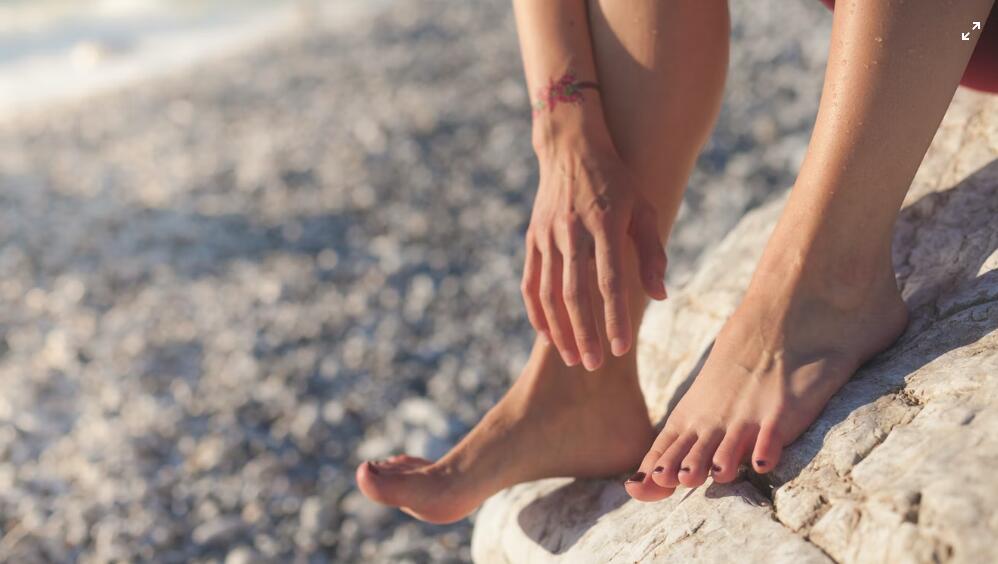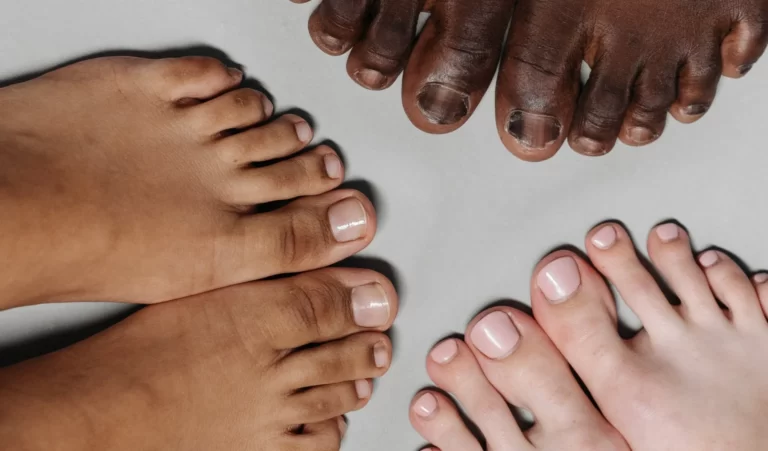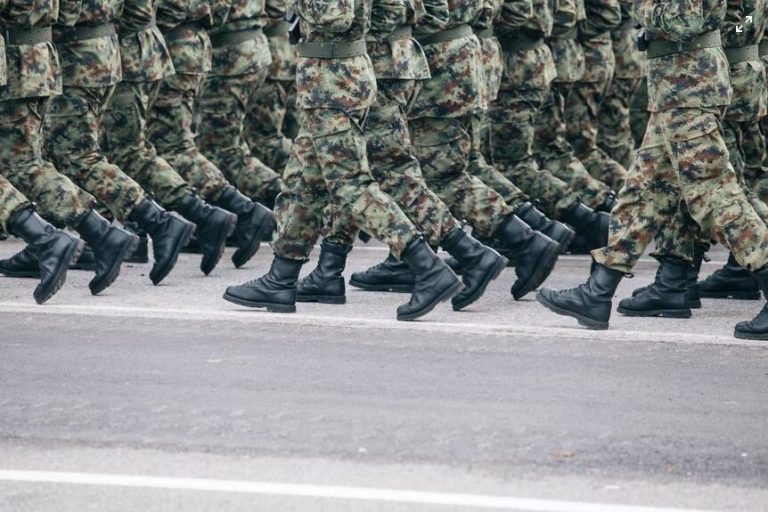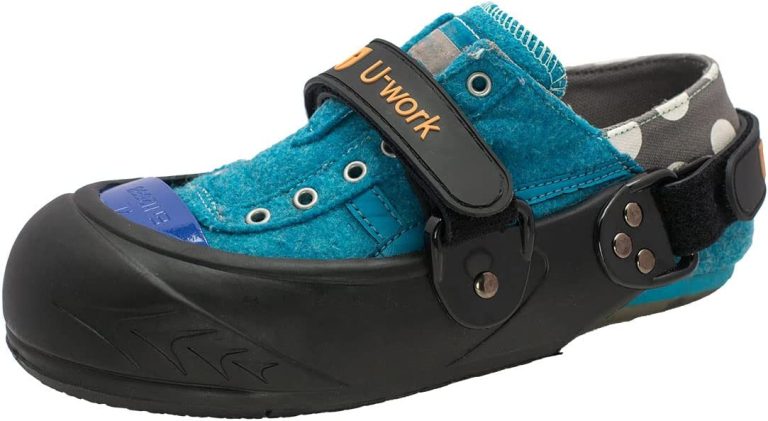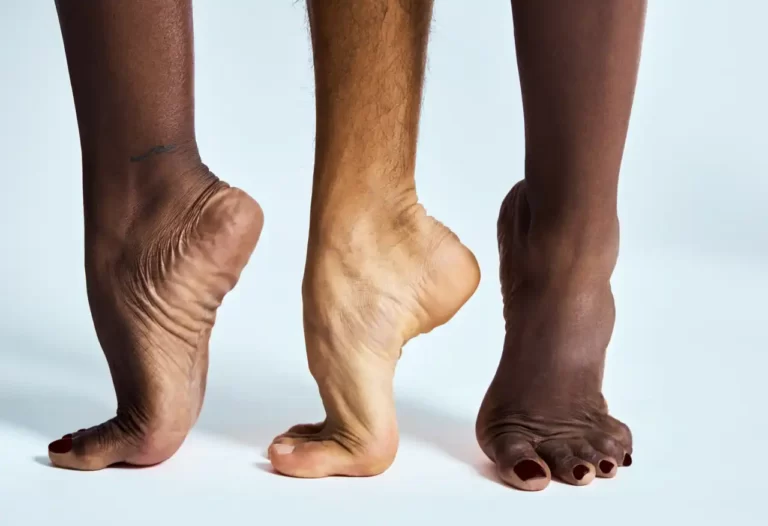12 Tips For How Do I Know If I Have Flat Feet
You scoured the Internet and talked to your mom, but still aren’t sure if you have flat feet or not. That’s totally fine; there are a lot of misconceptions about the condition. We’re sharing what we consider to be the most accurate information on how do I know if I have flat feet — including how to self-diagnose it!
What are flat feet?
You might think of your feet as solid and sturdy, but there are actually a lot of things that can go wrong with them. One such problem is flat feet, which occurs when your arches are flattened or collapsed. The heel bone in most people’s feet is positioned on top of the arch, but in flat-footed individuals, it’s usually below—or even below—the bottom edge of the foot.
This condition can be caused by genetics, injury or disease (such as diabetes), but what’s important to know is that it affects millions of people around the world every year. Flat feet can lead to pain in your legs and knees if you stand for too long; they also affect balance when walking or running quickly across uneven terrain like grassy fields where rocks lie hidden underfoot!
What are the symptoms of flat feet?
If you experience any of the symptoms below, it’s a good sign that you have flat feet:
- Pain in your feet or ankles. The most common symptom of flat feet is pain in the arches or heels of your feet. You may also experience pain on either side of your knees and hips, as well as in your lower back, neck and shoulders.
- Knee, hip or back pain after exercise or activity such as walking up stairs or running around outside with your kids.
- Difficulty finding shoes that fit because they’re too big everywhere except for at the heel area (where it should be tight).
What causes flat feet?
- The arch of your foot is made up of five small bones. It’s important to have good arches because they help you balance and support your body.
- Flat feet are caused by a lack of support in the arch of the foot, which increases stress on your joints and can lead to pain if left untreated.
- Flat feet often run in families, but it’s hard to predict whether or not you’ll develop them based on whether or not your parents had flat feet themselves. That said, if either one or both are dealing with flat feet now, there’s a good chance you’ll end up with them at some point too!
- Flat feet often occur after years of being overweight or obesity—and this isn’t just because someone needs more exercise; it’s also because fat deposits put pressure on the bottom of their feet as well as their knees (which leads us right back into our discussion about how important it is). But don’t worry: losing weight could help get rid of those pesky problems altogether!
How is flat foot diagnosed?
A flat foot is most commonly diagnosed by a doctor, but there are other ways to determine whether or not you have flat feet.
1.Do your toes point inward?
If you have a high arch and the rest of your foot is straight, then that’s normal. But if your feet are flat, there should be no inward or outward bend in the middle of your toes. To test this, sit down with both feet on the floor (standing up can make it harder because muscles in our legs and back may be tight). While looking at yourself from above (or in front of a mirror), try to spread out all five toes by pushing them as far apart as possible. If they don’t spread much at all and instead seem grouped together tightly, then this could indicate that you have flat feet.[
2.Go for a walk.
If you have flat feet, your toes may turn inward when walking. Flat feet are often associated with bunions, a bony growth on the side of the big toe that can cause pain in the foot and lead to other complications down the line.
Flat feet may also be caused by an unstable arch, which can cause pain in your ankles due to overpronation. Overpronation is when your arches collapse while walking or running, causing extra stress on your lower legs and knees as well as making it harder for you to balance yourself. Over time this can lead to wear and tear on joints throughout your body like knees, hips or lower back due to compensating for instability caused by flat feet at all times of day rather than just during exercise activities like running or jogging outdoors where flatfooted people tend not to wear shoes designed specifically for their condition
3.Do your shoes wear out quickly or unevenly?
If you notice that your shoes are wearing out quickly or unevenly, it may be a sign that you have flat feet. If the center of your sole is wearing away at a faster rate than the edges, this could be because of poor support for your foot.
It’s also worth noting that people with fallen arches can be prone to plantar fasciitis: an inflammation of the tissue on the bottom of their foot (the plantar fascia) caused by excessive stress placed on this tissue as they walk or stand.
4.What form do you have in the arch of your foot when you look at it from the side?
You can determine what form of arch you have by looking at your foot from the side. The arch should be visible, and it should be higher than any other part of the sole of your foot. A flat foot has a very low arch (or no visible arch). A high-arched foot has an obvious high-arching heel that projects outward when viewed laterally. A normal-arched foot falls somewhere in between these two extremes.
5.Put your feet together and stand with your heels against a wall.
- Put your feet together and stand with your heels against a wall.
- Stand on a flat surface, like a piece of paper.
- Wet the bottom of each foot with water and let it dry for 2 minutes.
If you can see any of your footprint when you look at these two pictures side-by-side, then you have flat feet. A doctor can also determine if a baby has a flat foot by examining them while they’re lying on their backs (this is called “pronation”). A pediatrician may use this test to monitor how well babies are growing or to spot signs of other health problems. In addition to being able to figure out if someone has flat feet, doctors or podiatrists can also treat patients who do have the condition by prescribing orthotics or special shoes that help support their arches so they don’t develop pain and ulcers from walking on hard surfaces all day long!
6.If you used to wear high heels but eventually stopped
If you used to wear high heels but eventually stopped because they were too uncomfortable, that may indicate that you have fallen arches.
High heels can cause pain and other health problems in the foot and leg, especially when worn for long periods of time or with inadequate support. If you are experiencing discomfort while wearing high heels, this may be a sign of flat feet. Wearing shoes that are too tight or have no arch support can also cause problems with your arch alignment and make flat feet more obvious.
7.The wet footprint test
A good way to determine whether you have flat feet is to take a look at your wet footprint. Your footprint is the shape of your foot when it’s standing in water. The more similarly shaped your dry and wet footprints are, the flatter your feet are.
You will need:
A mirror or another person
Water
A piece of cardboard, a small box lid or other flat surface
Pencil
If you do not have any paper around the house, you can use paper towels instead. You can also use the inside of your foot to perform this test instead of using a pencil marker. You may want to perform this test on carpet for better results if possible.
To do a wet footprint test:
Stand with your feet shoulder-width apart and put some water (or saliva) on the paper or cardboard surface. Place one foot on top of it so that it makes an imprint of your foot. Hold onto something for support if needed. Make sure that all four corners of your foot touch down completely into the water so that there are no gaps in between any parts of your foot and the paper/cardboard surface underneath it. Now step off carefully without moving your foot from its position at all while still holding onto something for support if needed. Now take a look at your footprint in the mirror or ask someone else to look at it too, especially if they have experience
8.Look at the bottoms of your shoes
A telltale sign of flat feet is wear on the soles of your shoes.
If you can see that your shoe’s sole is worn out in the middle of the bottom, then it could be an indication that you have flat feet. This wear pattern often indicates overpronation, which is when the foot rolls inward too much when walking or running.
If there’s no obvious wear pattern on your shoes though (and this will vary depending on what type of shoe and activity), then it might not mean anything at all! If there’s wear on both fronts and backs—or one side more than another—then this could indicate high arches.
9.Watch for signs of pain when you’re exercising or playing sports.
- The most common symptoms of flat feet are pain in the feet, ankles, knees, hips and back.
- If you have flat feet and experience any of these signs or symptoms of pain:
- Pain in your feet (e.g., tingling or numbness)
- Pain in your ankles
- Pain in your knees
- Pain in your hips and lower back area (could be due to weak muscles)
- Pain at the base of the spine that travels up into the neck and head area (this is a sign that something else has gone wrong with your body’s alignment)
10.Watch for signs of pain in children between ages three and five.
Children with flat feet often have pain in the arch of their foot. Pain can be a sign of a more serious condition, so it’s best to talk to your child’s doctor if you notice any unusual signs or symptoms. Pain may be felt in the ankle or foot, heel, or arch of the foot.
11.Check out your feet
- Are your shoes worn out in the middle of the sole? If so, you could have flat feet.
- If you’re wearing flip-flops, does it feel like your feet are falling inwards toward each other? This is a common sign of flat feet.
- Does it hurt when you walk on hard surfaces for a long time (like concrete or asphalt)? Flat feet can cause pain in this case because they aren’t supporting your weight well enough.
12.Wet the bottom of each foot with water
Now that you have a sense of what it might feel like to have flat feet, here are some tests to do in order to figure out if you really do.
- Wet the bottom of each foot with water. If they’re flat, it will be easier to see because the soles will spread out.
- Press your finger into the arch of each foot: if it feels like an indentation rather than a bumpy surface then that is another sign that you may be dealing with this condition.
Can a doctor determine if a baby has a flat foot?
Doctors can determine whether or not a baby has flat feet by performing a physical exam. After the exam, they may recommend that you have an x-ray of the foot to check for any issues with growth plates and other structures within the bones.
Alternatively, if your doctor suspects that your child has flat feet when performing a physical exam, they will likely recommend an MRI in order to get more detailed information about what is going on inside their body. An MRI uses radio waves to create images of organs and other parts inside of you. However, this test comes with risks such as being exposed to radiation or having internal bleeding during surgery if something goes wrong during testing procedures such as surgery or an MRI scan itself (which involves placing metal plates around body parts). Please consult with your physician before deciding whether or not this method would be appropriate for diagnosing yourself or someone else who needs help determining whether or not those symptoms indicate anything serious about how healthy their heart muscle tissue really is!
What can be done to treat flat feet?
There are many different treatment options for flat feet, from lifestyle changes to surgery.
- Exercise: This is one of the most effective ways to treat flat feet, especially when it’s done regularly and consistently over time. Exercises can strengthen the muscles that support your arches, which can help keep them in place as you walk and run.
- Shoe inserts: Some people use shoe inserts to increase the height of their arches or provide more cushioning between their feet and shoes. Orthotics (shoe inserts) are specially designed for each person based on their unique needs and medical history; they may be recommended by a physical therapist or podiatrist if you have severe flat feet that cause pain when walking or running regularly. However, these aren’t always effective because they don’t treat the underlying condition itself—instead they simply raise up your foot so it isn’t touching the ground as much when walking around normally without any extra pressure being placed on it due to having low arches at all times!
- Orthotics: These devices fit inside footwear like sneakers or clogs so there is less contact between your footbeds’ sole surface area versus barefoot conditions where less friction occurs between surfaces due both sides being covered evenly throughout all areas regardless whether worn barefoot indoors versus outside (depending how much longer outdoors).
When should someone see a doctor for a flat foot?
If you have pain in your feet, ankles, knees, hips or back (or any combination of these areas), it’s time to see a doctor. The same goes if you have pain in your neck or shoulders.
If flat feet are keeping you from being able to do things that other people do without a second thought—like walking around the block or playing with your kids—then this may be an appropriate time for treatment too!
What are the risk factors of flat feet?
You may be at risk for flat feet if you have any of the following:
- Genetics. Flat feet are often hereditary, meaning that your parents or grandparents may have had flat feet. If you have a family history of flat feet, you may be more likely to develop them as well.
- Age. As we get older, our bones start to lose minerals and become weaker over time. This can make it easier to develop flatfeet if you’re older than 40 years old (even though most people with flatfeet aren’t elderly).
- Gender. Women are twice as likely than men to develop the condition because their arches tend to be lower due to changes in hormones during pregnancy and menstruation periods; however, anyone can develop this condition regardless of their gender or age
Are there home remedies for treating a flat foot?
There are many types of foot pads available, and some are more effective than others. Before buying one, you should determine which type of pad would be most suitable for your needs. If your feet tend to get sore after exercising or walking long distances, then a gel-based pad will likely be the best choice for you because it offers both cushioning and shock absorption. These types of pads can also double as weight loss aids because they help improve blood circulation in the feet and increase circulation throughout the body (which can make it easier to lose weight).
If you experience a lot of discomfort in your heels when standing up straight on them without shoes on (or if this happens in certain pairs), then consider getting a heel cup that sits under each heel individually rather than just one pair with an integrated support system around both soles at once. If this doesn’t seem like enough help right away though—and especially if there’s pain associated with wearing tight-fitting footwear like sneakers–then invest in some insoles specifically designed to reduce discomfort caused by high arches or flat feet until things start feeling better again over time!
How can I prevent getting flat feet in the first place?
The best way to prevent flat feet is through regular exercises. Stretching exercises will not only help you stretch out your muscles, but they also improve blood flow and circulation. If you have been diagnosed with flat feet, it’s important to wear shoes that provide sufficient support. Avoid wearing high heels and tight-fitting shoes because they can cause more strain on the foot and body as a whole.
Remember to avoid activities that cause trauma or excessive stress on the foot and ankle joints like running or jumping rope too much since these activities can result in further damage of your ligaments and bones in this area.
Also, avoid doing any activity which puts intense strain on the arch of your foot such as dancing for long periods of time without taking breaks from standing up straight (such as sitting down on occasion) so that pressure does not build up over time due to repeated motions being done repetitively over time.”
Conclusion
If you’ve noticed any of these warning signs, we recommend seeing a doctor. Flat feet are a common condition, but it is good to know your options and how to prevent them in the first place.

